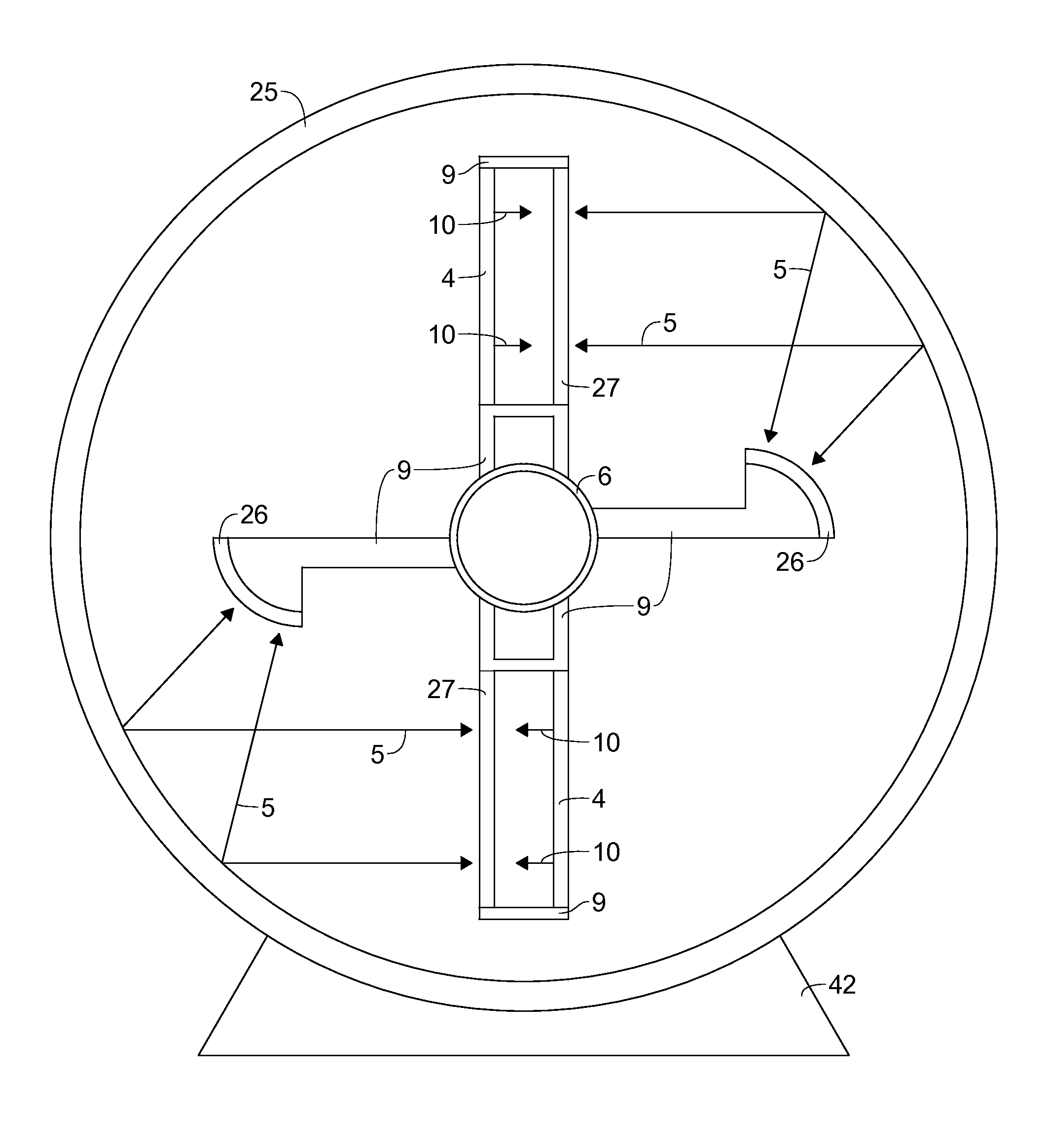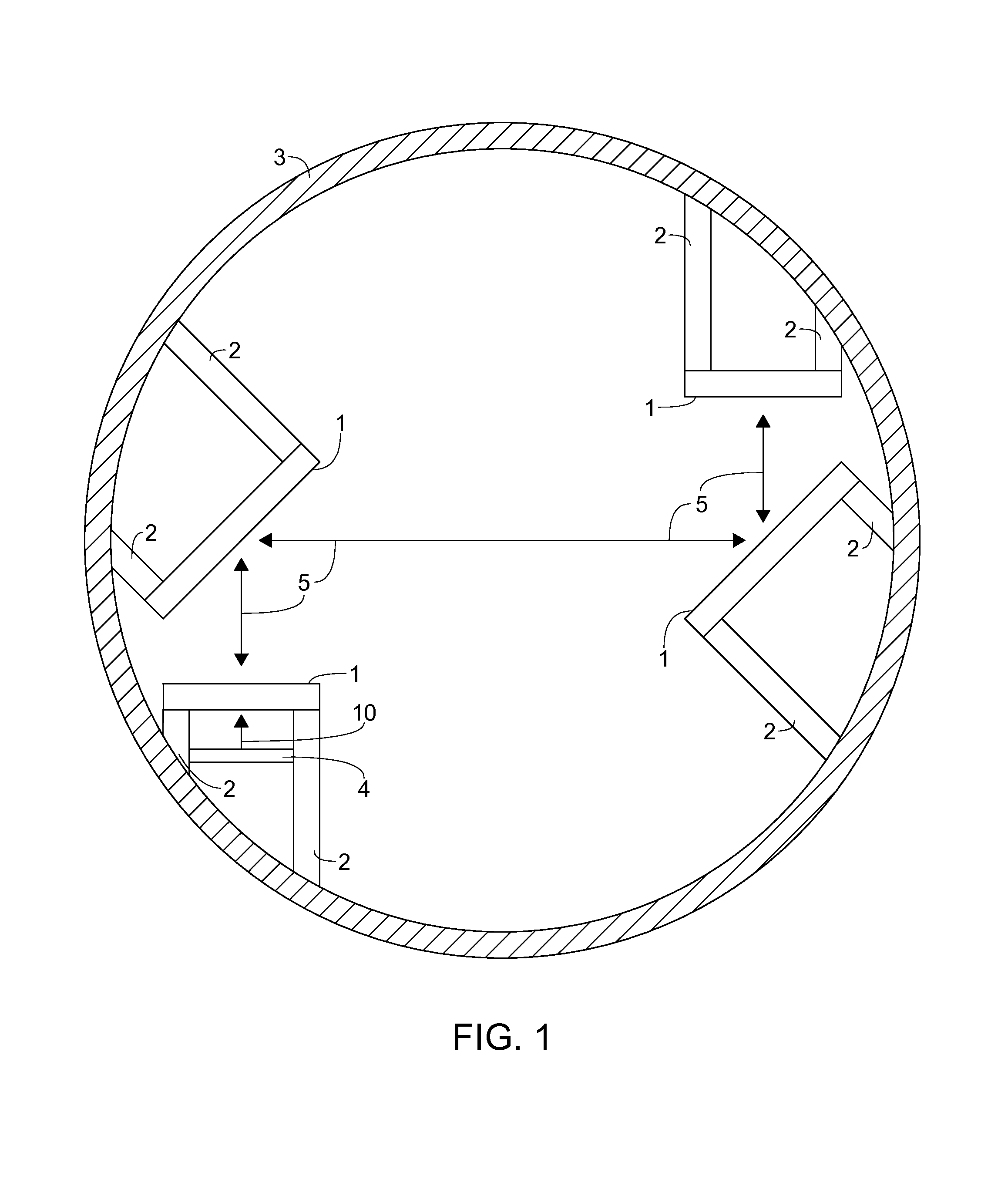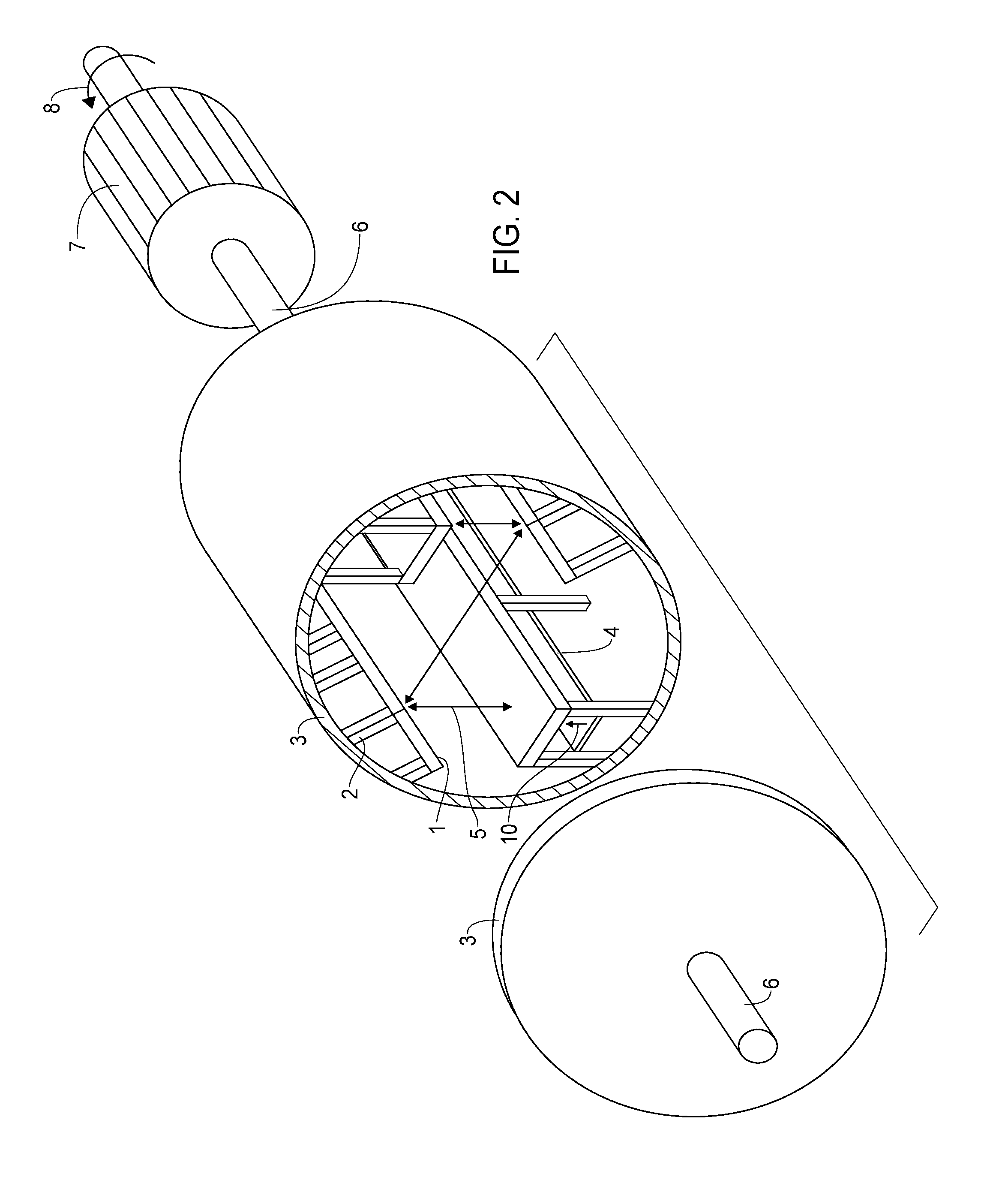Photon turbine generator for power generation
a photon turbine and power generation technology, applied in the direction of electric generator control, machines/engines, therapy, etc., can solve the problems that the photon turbine eventually ceases to operate, and achieve the effect of high circulating power, high quality, and maximum number of photon bounces
- Summary
- Abstract
- Description
- Claims
- Application Information
AI Technical Summary
Benefits of technology
Problems solved by technology
Method used
Image
Examples
Embodiment Construction
[0079]In the descriptions of the drawings and preferred embodiments, the term “photon turbine” is used to refer to the portion of the Photon Turbine Generator (PTG) that includes the resonant cavities or waveguides; any mechanisms, devices, or systems that support the resonators or waveguides; and the surrounding structure in which the resonant cavities or waveguides are located, such as the fairing and the components located inside of the fairing. The term Photon Turbine Generator, or PTG, comprises the photon turbine, the electrical generator coupled to the photon turbine, and any equipment that supports, regulates, or monitors the photon turbine or electrical generator.
[0080]FIG. 1 shows a cross-sectional view of a Photon Turbine Generator (PTG) using a simple, Z-shaped, folded resonator design. Four mirrors 1 are supported on mounts 2 within a cylindrical structure 3, which will be subjected to torques in a manner broadly similar to a squirrel cage or hamster wheel. The force du...
PUM
 Login to View More
Login to View More Abstract
Description
Claims
Application Information
 Login to View More
Login to View More - R&D
- Intellectual Property
- Life Sciences
- Materials
- Tech Scout
- Unparalleled Data Quality
- Higher Quality Content
- 60% Fewer Hallucinations
Browse by: Latest US Patents, China's latest patents, Technical Efficacy Thesaurus, Application Domain, Technology Topic, Popular Technical Reports.
© 2025 PatSnap. All rights reserved.Legal|Privacy policy|Modern Slavery Act Transparency Statement|Sitemap|About US| Contact US: help@patsnap.com



